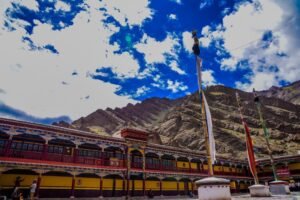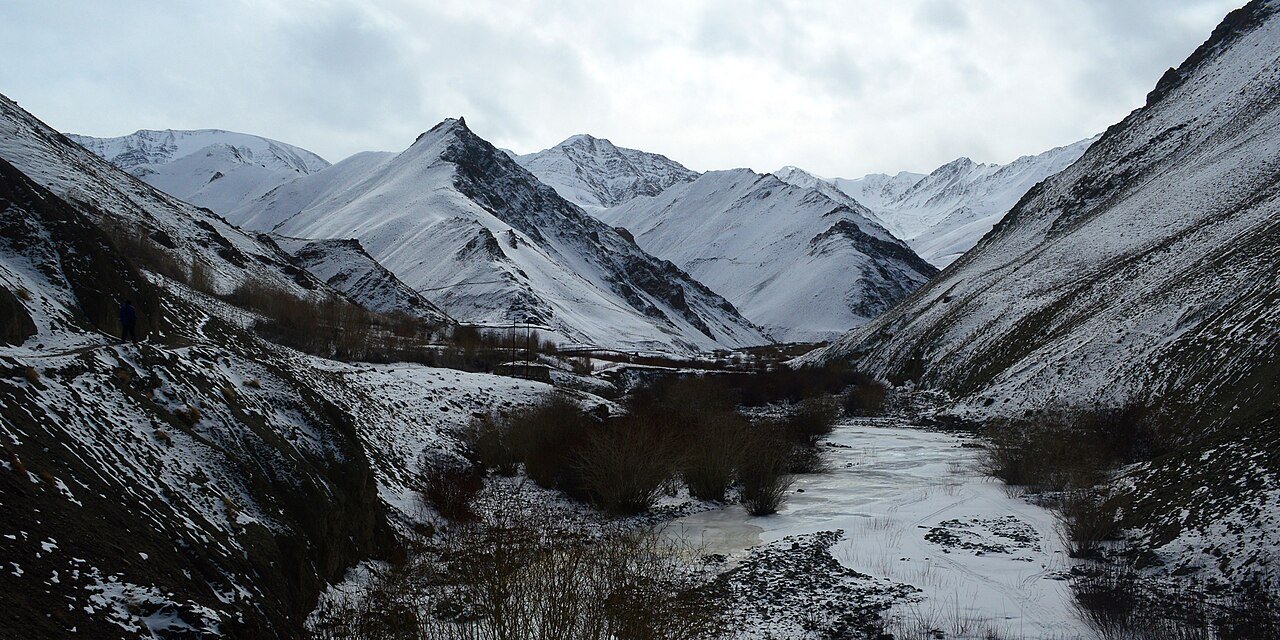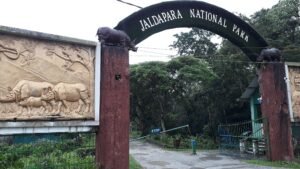Hemis National Park – Largest Protected Area in India

Image Credit: Prithwiraj Dhang, CC BY-SA 4.0, via Wikimedia Commons
Nestled in the rugged terrains of Ladakh, Hemis National Park stands as a beacon of natural wonder and conservation excellence. As the largest national park in India, spanning an impressive 4,400 square kilometers, this high-altitude sanctuary offers a glimpse into the untamed beauty of the Himalayas. From snow-capped peaks to elusive wildlife, Hemis National Park is a paradise for adventurers, nature enthusiasts, and photographers alike. Established in 1981, it is the only national park in India located north of the Himalayas, making it a unique destination that combines breathtaking landscapes with rich biodiversity.
Imagine trekking through valleys where the air is crisp and thin, spotting the ghostly silhouette of a snow leopard against rocky slopes, or witnessing the vibrant Hemis Festival at the ancient monastery that gives the park its name. Hemis National Park, often hailed as the largest national park in India, protects a fragile ecosystem in the Karakoram-West Tibetan Plateau alpine steppe ecoregion. Its location in the Leh district, about 50 km from Leh, places it in a rain-shadow zone, resulting in arid yet stunning scenery that changes dramatically with the seasons.
We'll delve deep into what makes Hemis National Park the crown jewel of Indian wildlife reserves. Whether you're planning a visit to spot endangered species like the snow leopard or simply want to learn about the largest national park in India. With its commitment to sustainable tourism and community involvement, Hemis National Park not only preserves nature but also empowers local communities.
The History and Establishment of Hemis National Park

The story of Hemis National Park begins in the early 1980s, when India recognized the need to protect its unique high-altitude ecosystems. Established in 1981 under the Indian Wildlife Protection Act of 1972, the park was initially a smaller reserve but expanded in 1988 and 1990 to reach its current vast size. This makes Hemis National Park the largest national park in India and the second-largest contiguous protected area after the Nanda Devi Biosphere Reserve.
The park's name derives from the historic Hemis Monastery, a 400-year-old Tibetan Buddhist site founded in the 17th century. This monastery, nestled within the park's boundaries, has long been a pilgrimage center and part of ancient silk routes connecting India to Central Asia. The area's cultural significance predates its status as a national park, with legends and historical claims adding layers of intrigue. For instance, in the late 19th century, Russian journalist Nicolas Notovitch controversially claimed that Jesus spent his “lost years” at Hemis Monastery, a tale that has drawn curious visitors ever since.
Conservation efforts gained momentum in the late 20th century as human-wildlife conflicts escalated due to overgrazing by local pastoralists. Over 1,600 people live within the park's boundaries, primarily in villages like Rumbak, Yurutse, and Sku-Kaya. These communities, mostly Buddhist agro-pastoralists, have coexisted with the wildlife for centuries, but modern pressures like tourism and climate change necessitated formal protection. The establishment of Hemis National Park as the largest national park in India marked a shift towards balancing human needs with ecological preservation.
Today, managed by the Department of Wildlife Protection of Jammu and Kashmir, the park exemplifies India's commitment to biodiversity. Initiatives like Project Snow Leopard, launched in 2009, highlight its role in safeguarding endangered species. The park's history is not just about protection; it's a narrative of cultural heritage intertwined with natural splendor, making it a must-visit for those exploring the largest national park in India.
Geography and Location: The Heart of Ladakh's Wilderness

Hemis National Park's geography is as dramatic as it is diverse, positioning it as the largest national park in India with elevations ranging from 3,000 to 6,000 meters. Located in the eastern part of Ladakh, in the Leh district, the park is bounded by the Indus River to the north and includes the catchments of the Markha and Rumbak rivers, as well as parts of the Zanskar Range. This strategic location north of the Himalayas places it in a trans-Himalayan zone, far from the monsoon influences, resulting in a cold desert climate.
The park's terrain features deep valleys, rocky slopes, snow-capped peaks, and meandering rivers, creating a surreal landscape that shifts from barren mountains to lush green patches in summer. Geological formations include slate, phyllite, schist, quartzite, crystalline limestone, and dolomite, remnants of the collision between the Indian and Eurasian tectonic plates. At higher altitudes above 5,700 meters, permanent snow cover dominates, while lower areas host alpine meadows and shrublands.
Climate in Hemis National Park is extreme, with temperatures plummeting to -20°C in winter and rising to 20°C in summer. Annual precipitation is low, ranging from <200mm, mostly as snow, due to the Himalayan rain shadow. This aridity shapes the ecosystem, making water sources like the Indus and Zanskar rivers crucial for wildlife and human settlements.
Accessibility to this largest national park in India is challenging yet rewarding. There are no metalled roads inside; rough tracks lead to entry points like Zingchen, Skiu, and Shang Sumdo. Since 2019, vehicles are restricted beyond check posts to minimize environmental impact, requiring visitors to proceed on foot. The park's remoteness enhances its appeal, offering unspoiled views that define Ladakh's wilderness. As the largest national park in India, Hemis's geography not only supports unique biodiversity but also provides a canvas for epic adventures.
| Attribute | Detail |
|---|---|
| Coordinates | 33.9–34.4 °N, 77.3–77.9 °E |
| Elevation range | 3,000 m (Indus valley) – 5,980 m (Kang Yatse massif) |
| Major valleys | Markha, Rumbak, Sumdah, Shang, Zanskar tributary |
| Geological setting | Ladakh batholith granites, Tethyan sedimentary series; active thrust faults create steep V-shaped gorges |
| Climate | Cold arid desert: annual precipitation < 200 mm; winter lows –20 °C, summer highs 20 °C |
Flora and Fauna: Biodiversity Hotspot of the Himalayas

Hemis National Park boasts an extraordinary array of flora and fauna, making it a biodiversity hotspot in the largest national park in India. The park's vegetation is adapted to high-altitude, arid conditions, featuring dry forests of juniper, Populus-Salix stands, and subalpine dry birch-fir at lower elevations. Alpine zones are dotted with species like Anemone, Gentiana, Thylacospermum, Leontopodium, and Delphinium, while steppe areas are dominated by Caragana, Artemisia, Stachys, and Ephedra. Notably, the park harbors 15 rare and endangered medicinal plants, including Acantholimon lycopodioides, Arnebia euchroma, Ephedra gerardiana, and Gentiana kurroo, which are vital for traditional Himalayan medicine.
The fauna is equally impressive, with 16 mammal species and 73 bird species recorded. Hemis National Park is renowned for its snow leopard population, estimated at 40-50 individuals (recent 2025 studies show ~477 snow leopards in all of Ladakh, which is ~68% of India's total ~709). For Hemis National Park specifically (4,400 km²), camera-trapping surveys (from sources like Mongabay, Phys.org, and a 2025 PLOS ONE study) estimate 40-50 individuals, with densities of 1-3 per 100 km² ), representing one of the highest densities worldwide. These elusive cats, known as the “ghost of the mountains,” thrive in the rocky terrains, preying on species like the bharal (blue sheep) and Asiatic ibex.
Other mammals include the endangered Eurasian brown bear, Tibetan wolf, red fox, Himalayan marmot, mountain weasel, and Himalayan mouse hare. The park is the only refuge in India for the shapu (Ladakhi urial), a vulnerable sheep species, as well as the argali (great Tibetan sheep). Birdlife is vibrant, with raptors like the golden eagle, lammergeier (bearded vulture), and Himalayan griffon vulture soaring overhead. Smaller birds include the brown accentor, robin accentor, tickell's leaf warbler, streaked rosefinch, Himalayan snowcock, chukar partridge, fire-fronted serin, red-billed chough, fork-tailed swift, and hill pigeon.
This rich biodiversity in the largest national park in India is supported by varied habitats, from alpine meadows to rocky cliffs. The interplay of flora and fauna creates a delicate ecosystem where plants provide forage for herbivores, which in turn sustain predators. Threats like climate change and habitat fragmentation make conservation crucial, but Hemis National Park's protected status ensures these species endure. For wildlife lovers, spotting these creatures in their natural habitat is an unforgettable experience, underscoring why Hemis is the premier destination among national parks in India.
| Species | Global status | Notes |
|---|---|---|
| Snow leopard (Panthera uncia) | VU ( Vulnerable ) | ≈40-50 individuals; 2-3 cats/100 km² in core valleys—highest density recorded worldwide. |
| Tibetan wolf (Canis lupus chanco) | EN (Endangered in India ) | Low densities; human-wildlife conflict around livestock. |
| Eurasian brown bear (Ursus arctos isabellinus) | CR (Critically Endangered in India) | Mostly in Zanskar side gorges. |
| Blue sheep (Pseudois nayaur) | LC ( Least Concern ) | Primary prey; densities 3–7/km² in Markha-Rumbak. |
| Himalayan ibex (Capra sibirica) | LC | Genetic studies show gene flow via a 19,835 km² Lahaul–Zanskar–Sham corridor contiguous with HNP. |
Wildlife Conservation Efforts in Hemis National Park
As the largest national park in India, Hemis National Park is at the forefront of wildlife conservation, particularly for endangered species like the snow leopard. Managed by the Jammu and Kashmir Department of Wildlife Protection, the park employs a community-based approach to mitigate human-wildlife conflicts. Key initiatives include Project Snow Leopard (2009), which focuses on research, monitoring, and habitat protection.
Human-wildlife dynamics have shifted positively over the years, with efforts to reduce livestock predation. Measures like predator-proof corrals, no-grazing zones, and compensation for losses have decreased retaliatory killings. The Ladakh Eco-tourism Project promotes homestays, nature guide training, and eco-cafes run by women, generating income while fostering conservation awareness.
Tourism fees, such as INR 1,500 per tourist for conservation, fund projects like solar power in villages and farmland fencing. Partnerships with organizations like Voygr Expeditions extend these efforts, replicating models across Central Asia through funds like the High Asia Habitat Fund. Camera trapping surveys estimate 40-50 snow leopards, highlighting success in population stability.
The park's status as a UNESCO World Heritage Site contender underscores its global importance in preserving the Himalayan ecosystem. By involving locals in sustainable tourism, Hemis National Park ensures that conservation benefits both wildlife and communities, setting a benchmark for protected areas in India.
| Issue | Action / Finding |
|---|---|
| Livestock depredation | Snow-leopard-proof corrals and community insurance schemes reduced losses by 60% in pilot villages. |
| Road expansion | Checkpoints and seasonal vehicle bans negotiated with communities to limit habitat fragmentation. |
| Climate change | Glacial retreat threatens alpine wetland micro-habitats; long-term vegetation plots established since 2018. |
| Tourism growth | < 6,000 trekkers/year but concentrated on Markha Valley; homestay code of conduct regulates waste and fuelwood use. |
Activities and Adventures: Thrills in the Largest National Park in India

Hemis National Park offers a plethora of activities that cater to adventure seekers and nature lovers alike. As the largest national park in India, it's a hub for trekking, with popular routes like the Markha Valley Trek and the Spituk to Stok trail over Ganda La pass. These multi-day hikes traverse remote valleys, high passes, and offer stunning views of peaks like Stok Kangri (6,153 m) and Kang Yatse (6,496 m).
Wildlife spotting, especially snow leopards in late winter, is a highlight, with guided tours providing the best chances. Birdwatching expeditions reveal raptors and songbirds, while photography enthusiasts capture the dramatic landscapes and elusive animals.
Camping under starlit skies in backcountry sites or homestays immerses visitors in the park's serenity. Mountaineering and rock climbing add adrenaline, and cultural experiences include attending the Hemis Tsechu festival at the monastery. Nearby, white-water rafting on the Indus River complements park adventures.
With restricted vehicle access, activities emphasize eco-friendly exploration, ensuring the largest national park in India remains pristine for future generations.
Best Time to Visit and How to Reach Hemis National Park
The best time to visit Hemis National Park, the largest national park in India, is from May to October, when weather is pleasant for trekking and sightseeing. Summers (June to September) offer mild temperatures, ideal for outdoor activities, while late winter (January to March) is prime for snow leopard spotting, though harsh cold requires preparation.
To reach the park, fly into Kushok Bakula Rimpochee Airport in Leh, then travel 50 km by shared taxi or private vehicle. The nearest railway station is Jammu Tawi, followed by a road journey. Entry fees are INR 50 for Indians and INR 300 for foreigners, with the park open from 9:00 AM to 5:00 PM. Plan for acclimatization due to high altitudes.
Visitor Information
| Aspect | Current (2025) |
|---|---|
| Entry points | Zingchen & Shang check-posts; Ladakh Protected Area Permit required for foreigners. |
| Fees | ₹20Indian / ₹100 foreign; subject to revision—verify locally.( for camera charges may apply ) |
| Prime academic season | Late-May to mid-September (snow-free passes). |
| Winter research/logistics | Temperatures –25 °C; homestays only in Rumbak cluster; satellite comms essential. |
Nearby Attractions: Extending Your Ladakh Adventure
Beyond Hemis National Park, the largest national park in India, explore the Hemis Monastery for its ancient artifacts and festivals. Nearby, Thiksey and Shey Monasteries offer cultural insights, while Pangong Lake and Leh town provide scenic and historical diversions.
Tips for Visitors: Making the Most of Your Trip
When visiting Hemis National Park, acclimatize to altitudes, carry essentials like warm clothing and water, and respect wildlife by maintaining distance. Use local guides, follow eco-tourism rules, and book homestays in advance. Permits may be required for trekking.
Why Hemis National Park Deserves Your Attention
Hemis National Park, as the largest national park in India, encapsulates the essence of Himalayan wilderness. Its blend of biodiversity, culture, and adventure makes it an unparalleled destination. Plan your visit to this conservation icon and contribute to its legacy.
From lichen-stained scree to soaring lammergeiers, Hemis National Park proves how rugged high-altitude deserts can nurture extraordinary life—and how science, faith and stewardship intertwine to safeguard it. Whether you trek its valleys or analyse its datasets from afar, remember that every snow-leopard sighting and each juniper sprig tells a chapter of Earth’s most resilient ecosystems. Engage responsibly, share knowledge widely, and let Hemis remain India’s largest open-air classroom for generations.
Kaziranga National Park | Explore Assam’s Incredible Wildlife | 2025
National Parks in India 2025 – Complete List of 107 Beautiful Parks
Gir National Park: Glorious History & Exciting Tourism (2025)







